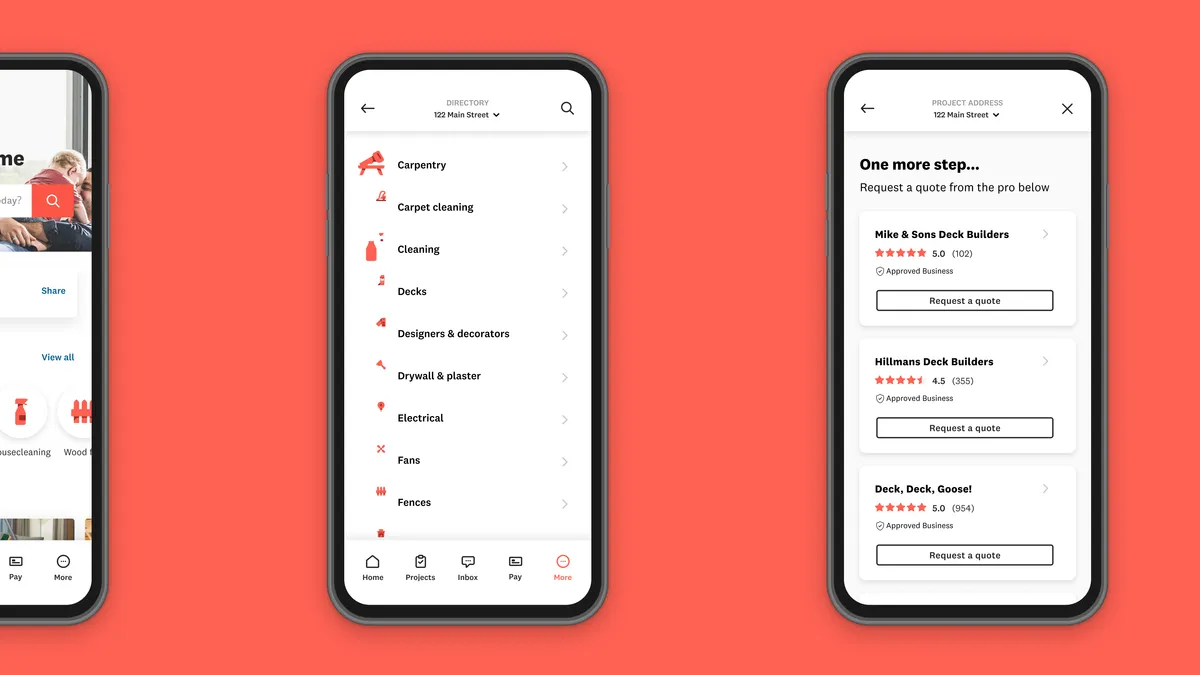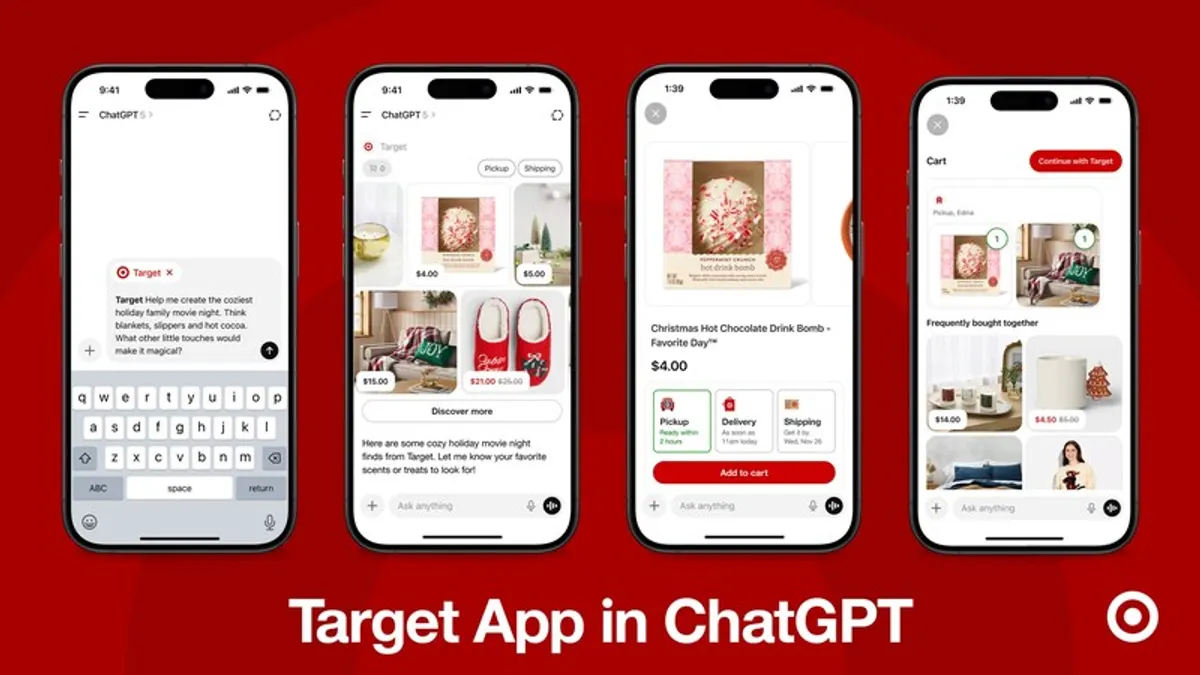Angi, the online guide to home services that recently changed its name from Angie's List, is making its mobile app more central to the customer experience as part of its rebrand. The goal is to engage tech-savvy young adults as they start families and buy their first homes.
The reformatted Angi app's features include the ability to buy pre-priced jobs, an option to pay a service provider directly and financing choices. That's in addition to established features like profile pages of contractors, and a way to reach them through text message or phone, the company announced. It marks an evolution from its early days as an online directory to research and rate home contractors.
"Today, our homeowners want so much more than a list," said Oisin Hanrahan, who in February was appointed chief executive of Angi. "The Angi mobile app, in particular, is so much more than that. It's a way to figure out how to get your home to be a place that you really enjoy."
Angi's rebrand comes amid a surge in demand for homes as record-low financing costs helped to bring more buyers into the market. With bidding wars becoming the norm, home prices jumped more than 11% in January from a year earlier, the biggest annual gain in almost 15 years, according to the S&P CoreLogic Case-Shiller Index.
Those newly minted homeowners will help to support demand for everything from routine maintenance to more ambitious renovations. Hanrahan sees a place for Angi's mobile app in bringing together buyers and sellers of those services.
"Angi is a way to help you live where you live, and within that, it's about building out a mobile experience that allows you to do everything you need to do in order to take care of your home," he said. "All those things today are built into the new Angi mobile experience, and some of those things truly are only possible on mobile."
Seamlessly integrated features
The easy integration among different features of the Angi app, including instant communications between customers and service providers, promises more versatility than the desktop experience. With most people carrying their smartphones everywhere they go, mobile devices have become the way consumers experience online brands like Angi, whose roots go back to the earliest days of the commercialized internet.
"We're trying to turn the Angi mobile app into this remote control for taking care of everything in your home," Hanrahan said. "You can really think of Angi as the home for 'everything home.'"
Before becoming CEO, Hanrahan had been chief product officer of Angi Homeservices, the company that majority owner IAC created by combining Angie's List with HomeAdvisor in 2017. The following year, Angi Homeservices acquired Handy, which Hanrahan had co-founded in 2012, to expand into no-haggle services.
"We're trying to turn the Angi mobile app into this remote control for taking care of everything in your home."

Oisin Hanrahan
CEO, Angi
The rebrand comes as Angi aims to connect with consumers who have grown up on mobile experiences and instant gratification. Those interactions shape their expectations of brands.
"Whether it's ordering food at the touch of a button, booking a table at a restaurant, booking a car or taxi, ordering groceries, we've almost built 'The Jetsons,'" Hanrahan said. "Home services and taking care of your home has some distance to go to catch up, and that's what we're building."
A generation of renters?
As millions of people spent more time at home during lockdowns, they put more time and effort into transforming their living spaces into home offices and schools. They also sought to make their homes more comfortable as entertainment centers for the whole family.
"If you rewind a year and a half, there was a debate on whether millennials would ever become homeowners — would they stay as a generation of renters?" Hanrahan said. "There's a lot of people that are concerned about that, but we don't need to be anymore. Millennials have really leaned in and started buying homes at a faster rate than ever before."
While the supply of homes is currently very constrained, Hanrahan expects to see homeownership rise as inventory levels come into line with demand. Meanwhile, personal savings are more than $1 trillion higher than their prepandemic levels, a sign of massive pent-up demand for everything from vacations to renovations.
"For the people who managed to buy homes, a lot of their spending is going into home upgrades," Hanrahan said. "You see people taking a lot of pride in their homes, and really starting to enjoy spending more time there throughout the pandemic. We're going to see that continue."
He said he expects that as younger couples are finally able to host weddings that have been put off during the pandemic, they'll progress to the next stage of settling down with kids and a home. As first-time homeowners, those consumers will gradually step up their projects from repainting rooms to taking on bigger renovations that require financing.
"That's where we're going to see things go over the next 12, 18 and 24 months, and it's going to create demand for everything," Hanrahan said.




















